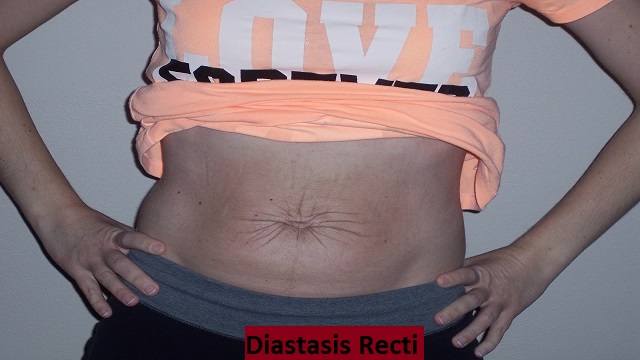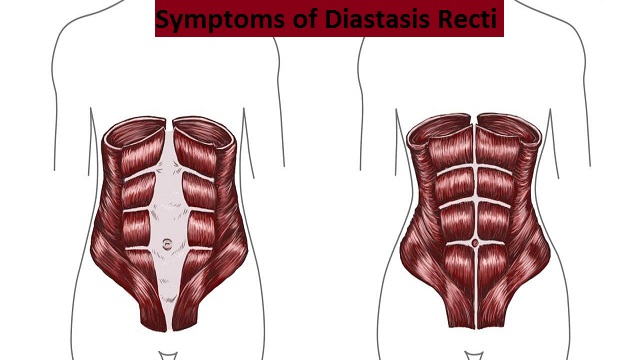
What Diastasis Recti Is and Treatment Options.
Giving birth to a child is one of the most wonderful experiences one can have.The growth and development of the baby inside the mother’s body, which completely alters the anatomical structure and function, must be endured by the woman’s body in order to produce such a miraculous event.
Diastasis Recti, which is the separation of the abdominal muscles to make room for a pregnancy, is a common condition that is rarely discussed. A woman might be stopped in her tracks and wonder, “What happened to my body?”. You may have diastasis recti if your abdomen swells or cones when you sneeze, cough, or brace your core.
Many women don’t even know they have diastasis recti due to the chaotic time we refer to as the postpartum period. If you do, it can be extremely demoralizing and embarrassing, leading you to believe that you will never be the same again. You’re not alone, and there are things we’ll teach you that you can do to improve your health, wellbeing, and physique. The good news is that just about every woman who becomes pregnant has some degree of diastasis recti.
Exactly what is diastasis recti?
Diastasis is Greek for division. Your abs, or “rectus abdominis,” are referred to as “recti.”. Especially in postpartum women, diastasis recti is a common condition. In fact, it’s estimated that one in two women—or at least 50%—experience severe abdominal separation.
Making space in a woman’s body’s abdominal cavity so that the baby has room to grow requires the separation. While the body creates space, it pushes other organs like the lungs, stomach, spleen, bladder, and other similar organs out of the way in addition to stretching the linea alba and spacing out the abdominal muscles.
Unfortunately, abdominal separation can make it more difficult for women to develop or strengthen their core because the right and left sides of the rectus abdominus muscles are divided.
When the abdominal muscles fail to heal and reattach, a gap forms in the middle of the stomach, giving the appearance of a “pooch” and leading to Diastasis Recti. ”
Women who are older, have had numerous pregnancies, or have given birth to several children are more likely to develop diastasis recti. About three-fourths of women with diastasis recti begin to experience it six months after giving birth. Men with larger guts are also susceptible to having it.
It is advised to build strength in the abdominal region prior to becoming pregnant to give the body the best chance of resisting the over-separation, even though this is the best way to prevent complete separation and unwelcome long-term changes in the area. It’s crucial to understand that Diastasis Recti or separation are neither bad nor incorrect.

What Are the Symptoms of Diastasis Recti?
Fortunately, diastasis recti is a condition that you can easily test for at home if you’re unsure whether or not you have it.
- A good starting position is to lay on your back with your knees bent and your feet flat on the floor.
- With your fingertips facing you, place the fingers of your left hand just above your belly button.
your right thigh with your hand there. - Lift your shoulders and head off the ground as you exhale. your right thigh with your right hand. Contract your abs.
- Identify the width using your left fingers.
- Little to no diastasis recti is present if the gap is smaller than two fingers. But there is diastasis recti present and will unquestionably need specialized physical therapy if the gap is between three and five fingers wide.
What Is The Healing Time For Diastasis Recti?
Diastasis Recti healing does not follow a standard timeline. It’s undoubtedly not a quick process, and each woman’s recovery of the weak connective tissue takes a different course of action. To close a diastasis on anyone at any time, however, is never too late.
The amount of dedication, perseverance, and consistency you have for the healing process will determine how long it takes to completely close the gap. In general, it can take six weeks to a year, but it’s well worth it for the advantages, confidence, and body reclamation.
Exercises For Abs And Diastasis Recti:
It can be extremely beneficial to your core to be aware of how exercise affects diastasis recti and to use it safely. Strengthening the linea alba and enhancing overall stability in the rectus abdominal muscles are the main objectives of exercising with diastasis recti. Compared to sit-ups or crunches, core stability exercises can increase core stability and reduce intra-abdominal pressure.
It is crucial that you practice mindfulness and awareness of your feelings as you move while exercising. Find a different movement that is not painful if there is pain or discomfort and stop doing the current one. Contact your doctor if the pain or discomfort persists.
Exercises for the core to heal diastasis recti.
Be aware of the position of your spine, the state of your abdomen, and your rib cage as you attempt each movement. If your stomach is constricted, this may be a clear sign of abdominal separation and more severe diastasis recti, which may call for more specialized physical therapy.
Advice for healing.
- Use proper form when performing routine daily tasks.
- When standing or squatting, maintain proper form.
- When you’re sitting, standing, or moving, keep your core engaged.
Stop and re-engage in the position if your rib cage flares, your spine arches, or your pelvic bones are “tipping back.”. Consider a simpler modification of the exercise or perform fewer repetitions if you find it difficult to maintain your ribcage, spine, or pelvis in place.
How Is Diastasis Recti Fixed?
Diastasis recti can be treated and recovered from in a number of ways, which is fortunate. All of these options are up to your interpretation, and keep in mind that everyone is unique. Consequently, some of these may be more helpful to some people than others.

1. BREATHING AND EXERCISES FOR CORE STABILITY.
Core stability exercises that are performed safely throughout pregnancy and the postpartum period can be very helpful to your recovery if you have a mild case of diastasis recti.
- Pelvic Tilt.
- Extensions of the legs.
- Clams or knee drops to the side.
- March was lying.
- Dog Bird.
- a dead bug.
- Reaching up from above.
- variations on the glute bridge.
- Walking on Your Heels.
Proper breathing techniques are a practiced skill that are frequently taught and learned in physical therapy and will help with your recovery. These techniques include breathing during exercise and during core stability movements.
2. The Tupler Approach.
According to Julie Tupler’s website, Diastasisrehab . com, she is a registered nurse, certified childbirth educator, and certified personal trainer. She developed the Tupler technique for treating diastasis recti. The Tupler technique program lasts for 18 weeks, but you must continue exercising after that point if you want to keep your results.
The Tupler technique consists of four steps: exercises, splinting, contracting your transverse abdominis muscle while performing daily tasks, and getting up and down correctly. Until your muscles are no longer separated, Tupler advises program participants to wear the Diastasis Rehab splint constantly, with the exception of when bathing.
She compares it to wearing a cast while a broken bone heals. To increase the efficiency of your muscle-strengthening exercises, the splint holds your muscles together.
Tupler advises using her exercises exclusively for the first six weeks of the program, with the exception of walking. You will then be familiar with how to incorporate the Tupler technique into your regular exercise regimen.

3. EXERCISE THERAPY.
Intense pelvic floor and abdominal physical therapy is advised and encouraged for moderate-to-severe cases of diastasis recti. The likelihood of a complete recovery is very good if physical therapy is consistently pursued and committed to.
4. SURGERY.
Typically, only women with severe cases of diastasis recti should consider this option. It’s usually handled as a tummy tuck and done by plastic surgeons; it’s the last option. Women must be absolutely certain that they are done having children before having surgery, unless it is absolutely necessary for healing.
Neglect these exercises if you have diastasis recti:
The following exercises should be avoided if your core is weak and you still have a 2-3 finger-width separation within your abs, even though it might seem like a good idea to jump right into a full-blown ab circuit
- Pushups.
- Planks.
- crunch in forwarding of any kind.
- lifting the shoulders up off the ground (i.e. e. lies toe touches).
- climbers of mountains.
- Pilates 100s.
- Dog-leg position.
- Woodcutters, Russian twists, v-ups, or any other jack-knifing or twisting.
- Exercises on a stability ball with your back on the ball.
- Burpees on the ground or into a plank.
Collagen Supplement for Recti Diastasis.
There is another way to help and direct your body through the healing process as it recovers from Diastasis Recti in addition to understanding the significance of and safely practicing between conception and delivery, there is core stability.
During pregnancy, the linea alba’s collagen connective tissue thins and separates as the belly grows. The role of collagen, primarily types I and III, is to support and protect the abdominal wall.
Higher levels of type I and type III collagen in the body are crucial for your body’s ability to fully and sufficiently repair your abdominal structure, especially the rectus abdominus muscle and connective linea alba tissue.
Collagen of Type I:
Because it primarily makes up tendons and mature scar tissue and offers resistance to pressure and stress on tendons applied by force within the body, such as a growing abdomen during pregnancy, type I collagen is the most prevalent type of collagen in the human body.
Collagen of type III:
The expandable structures in your body are vitally supported by type III collagen, and higher levels of this type are typically found in the initial stages of wound healing.
18 amino acids are present in both Type I and Type III of bovine collagen, with glycine, proline, and hydroxyproline in particular being particularly important as building blocks for tendons, ligaments, and supporting the body’s inflammatory and immune responses.
Read More: Dizziness During Periods
Leave a Reply